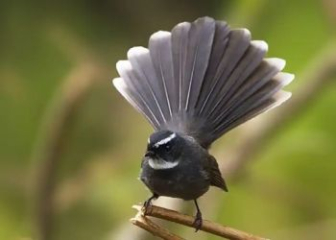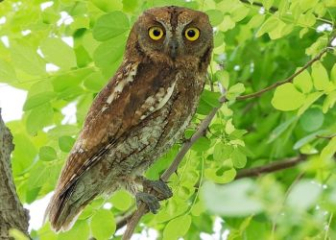Kingfisher - Beautiful bird of the river region
Blog | by
The Kingfisher (Alcedo atthis) is known for its colorful plumage of turquoise and orange, its unique nesting and hunting behavior.
The Kingfisher (scientific name: Alcedo atthis) or also known as the common kingfisher - a bird with colorful plumage with a combination of turquoise and bright orange, often appearing by rivers and streams. Not only do they have a beautiful appearance, but they also have unique hunting habits and extremely impressive nesting behavior.
Although the Kingfisher is not popular among pet birds, it is still loved by many and plays an important role in freshwater ecosystems.
With nicebirds, let's learn more about kingfishers from their appearance, habits to the reason why they are not kept as pets much!
Information about the kingfisher :
|
Scientific name |
Alcedo Atthis |
|
Common name |
Kingfisher, river kingfisher |
|
English name |
Eurasian Kingfisher, Common Kingfisher |
|
Set |
Coraciiformes - Order Lemongrass |
|
Surname |
Alcedinidae - Kingfishers, river kingfishers |
|
Subfamily |
Alcedininae |
|
Distribution |
Asia, Europe, North Africa, Oceania |
|
Size |
16 - 17 cm |
Origin & distribution of kingfisher
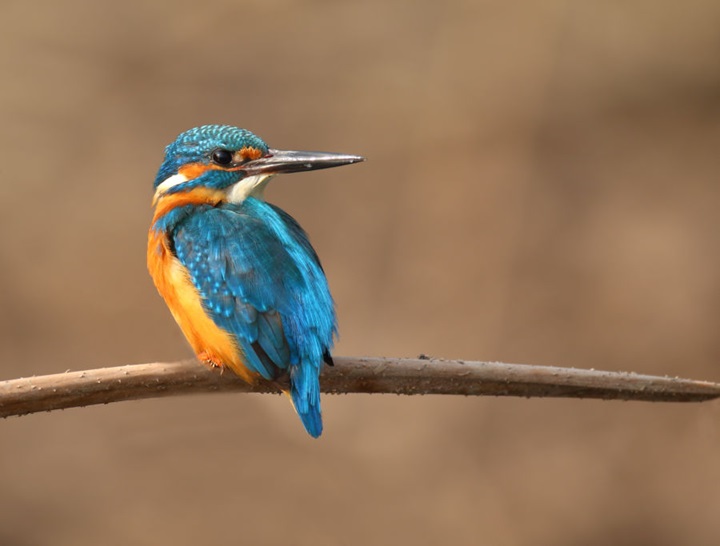
A kingfisher is perched on a tree branch.
The kingfisher, also known as the river kingfisher, belongs to the Coraciiformes order, Alcedinidae family - a group of small birds that hunt fish and other aquatic species. Scientific studies suggest that the ancestors of the kingfisher appeared millions of years ago.
Currently, the kingfisher has a very wide distribution range, from Europe to Asia, Japan and even some islands in Oceania. In Vietnam, this bird species also commonly appears in areas with abundant water sources such as rivers, lakes, canals, etc.
In some cultures in Asia and Europe, the kingfisher is also considered a symbol of agility and dexterity. Besides, it also plays an important role in balancing the aquatic ecosystem.
Subspecies of Kingfisher
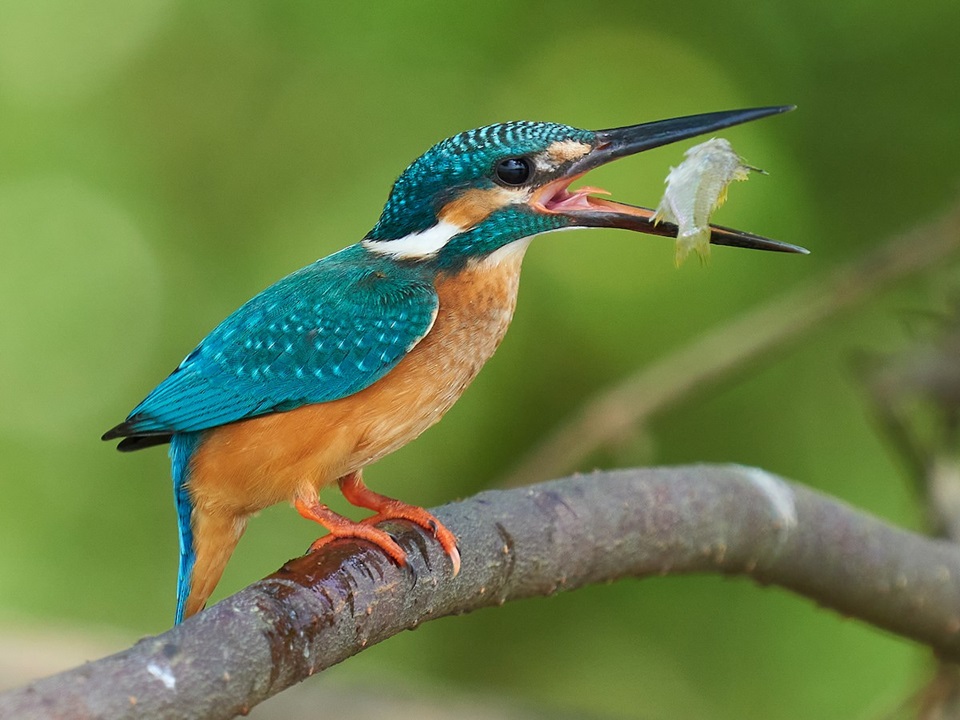
Picture of the most common subspecies of kingfisher - Alcedo atthis atthis.
Currently, there are 7 recognized subspecies of kingfisher based on differences in color, size and distribution area. Specifically as follows:
|
Subspecies |
Distribution |
Characteristic |
|
Alcedo atthis atthis |
Spain, central Siberia, China and India |
The most standard subspecies, of medium size |
|
Alcedo atthis bengalensis |
Central India to southeastern Siberia, Southeast Asia |
Darker back blue, smaller size Alcedo atthis atthis |
|
Alcedo atthis taprobana |
Sri Lanka and South India |
Brighter, more colorful fur |
|
Alcedo atthis hispidoides |
Southeast Asia |
Smaller in size than the European species but brighter in colour. |
|
Alcedo atthis rufidorsa |
Northern Japan, Eastern Siberia |
The back is reddish brown, completely different from other species. |
|
Alcedo atthis salomonensis |
Solomon Islands |
The brightest color |
|
Alcedo atthis ispida |
Northern Spain, Western Russia, Southern Norway |
Cobalt blue back, long beak |
In general, tropical subspecies of Kingfisher will have brighter, more colorful colors than temperate ones. Northern subspecies will be larger in size than southern species.
Kingfisher appearance
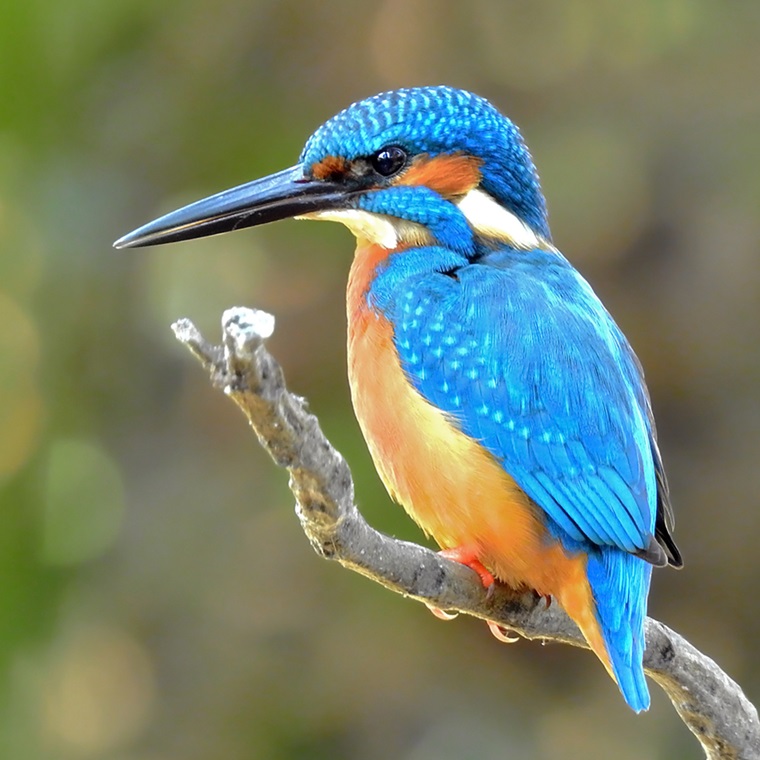
The brilliant appearance of a kingfisher (common kingfisher)
Although there are many different subspecies, the overall appearance of the bird still has some common characteristics. Specifically as follows:
Size and body :
- Length: 16 - 17 cm (including tail)
- Wingspan: About 25 cm
- Weight: 30 - 45g
- Body: Plump, head is often larger than body, looks very cute.
Coat color :
The overall coat has a metallic sheen when reflected in the light, looking very unique and eye-catching.
- The feathers on the back, head and wings are metallic turquoise.
- The chest and belly are usually bright orange or brownish orange.
- Throat is white
- On the top of the head there is a slightly shaggy section of hair that can stand up.
- The beak is very long, pointed, jet black in males and dark red in females.
- Short, small legs, red-orange in color.
Other features :
- Big, bright, black eyes, can observe very well
- Short, round wings
- Short tail, rarely spread out.
Distinguishing between male and female phoenixes:
-
Overall they have similar colors, the only difference is in the beak color, the male has a jet black beak while the female has a light red or dark red underbeak.
Kingfisher behavior

A kingfisher is soaring out of the water with its prize.
Below are the unique habits and behaviors found only in kingfishers. Please learn more to see why this bird is known as the "underwater predator".
Unique hunting habits
Kingfishers are carnivorous birds, mainly eating shrimp, small fish, aquatic insects, tadpoles, and worms. They have a very unique way of hunting, specifically as follows:
- The kingfisher perches on a tree branch near the water and then uses its sharp eyes to observe and search for prey.
- After detecting prey, the bird will dive into the water at lightning speed to capture the prey with its long, sharp beak.
- After catching fish or prey, the bird will immediately return to the tree branch to beat or impact the prey to death before swallowing it.
Habits
Kingfishers prefer to live alone or in pairs and rarely gather in large flocks. They are also very territorial, with each individual controlling a certain stretch of river, canal or feeding area and absolutely not allowing others to encroach.
These birds can also migrate for short periods when the water environment is dry or in winter, they will move to places with more abundant, warmer water sources.
Reproductive behavior
The breeding season of kingfishers usually falls from March to July in temperate zones. In Vietnam, it can be a little earlier.
They do not make nests from branches and leaves like other birds, but dig small burrows on the banks of rivers and streams.
Both male and female birds dig nests together, the nests are 40 - 90 cm long, each clutch of female birds lays 5 - 7 eggs, then they will incubate the eggs for 19 - 21 days.
The chicks will be carefully cared for and leave the nest after 3 - 4 weeks to begin their independent lives.
Some other special behaviors
In addition to the above habits, the catfish also has many other special behaviors and habits that reflect its lifestyle, such as the following:
- Able to see through water thanks to specially structured eyes, helping to accurately determine the location of prey underwater.
- Fly extremely fast and observe the water surface well to detect prey.
- Highly alert, easily frightened and startled by strange noises
Can kingfishers be kept as pets?
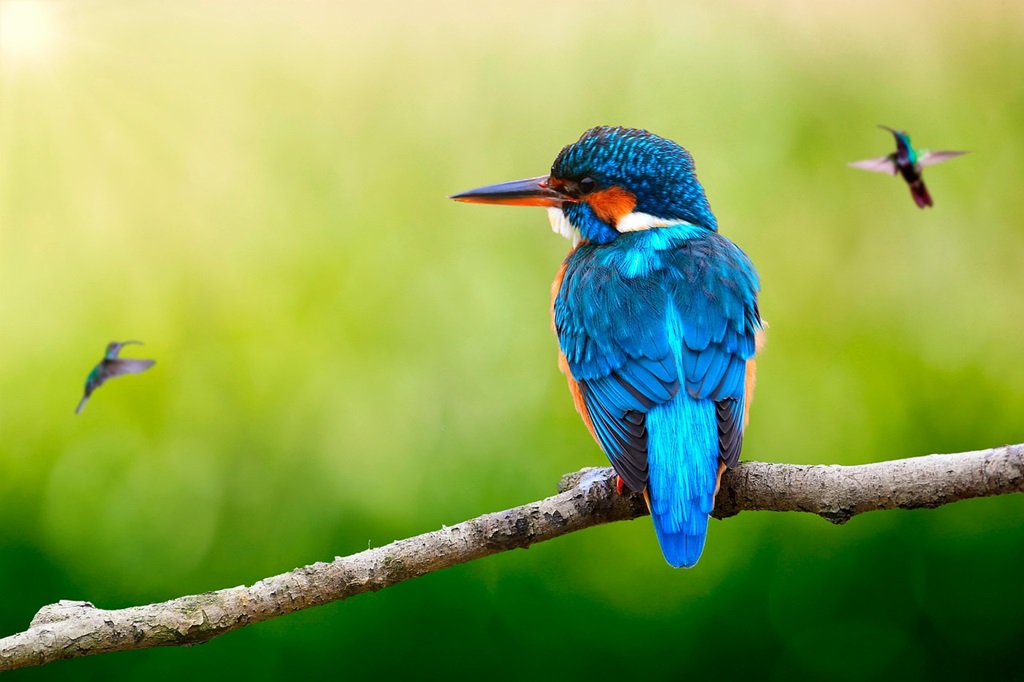
The kingfisher is accustomed to living in the wild.
Despite its beautiful appearance and many interesting habits, the kingfisher is not popular as a pet bird because it is very difficult and picky about its owner. Specifically as follows:
Picky eater
As shared, kingfishers only eat fresh food such as baby fish, shrimp, water worms,... and absolutely do not eat bran or dry food like normal pet birds, so preparing food for them is difficult and time-consuming.
Wild nature, difficult to tame
Cockatoos are very shy, easily startled, panicked and extremely difficult to tame. Therefore, when kept in captivity, they can become stressed, stop eating and die.
Need a clean water space
Kingfisher is a bird that specializes in foraging and hunting by the river, so if you raise it artificially, you also need to have a small fish tank or lake so that the bird can perform natural hunting behavior.
Legal and ethical issues
In some countries around the world, kingfishers are protected wild birds and cannot be caught or kept in captivity without a license.
In Vietnam, they are not on the banned list, but it is very difficult to ensure a suitable living environment for them when kept in captivity, so you need to consider it.
In short, the kingfisher can be kept as a pet bird, but it is very picky about the player because it is difficult to care for, difficult to tame and requires a high quality of life. So you should choose other pet birds to try instead of choosing the kingfisher!
Beautiful and impressive pictures of kingfishers
We invite you to admire a collection of the most beautiful and impressive kingfisher images with colorful colors and unique and rare hunting postures.

A kingfisher holds its prize of a baby fish in its mouth.
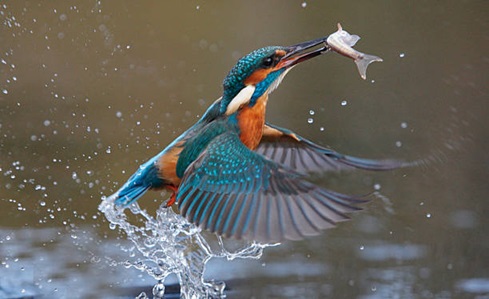
Beautiful moment when the kingfisher is flying up from under the water.
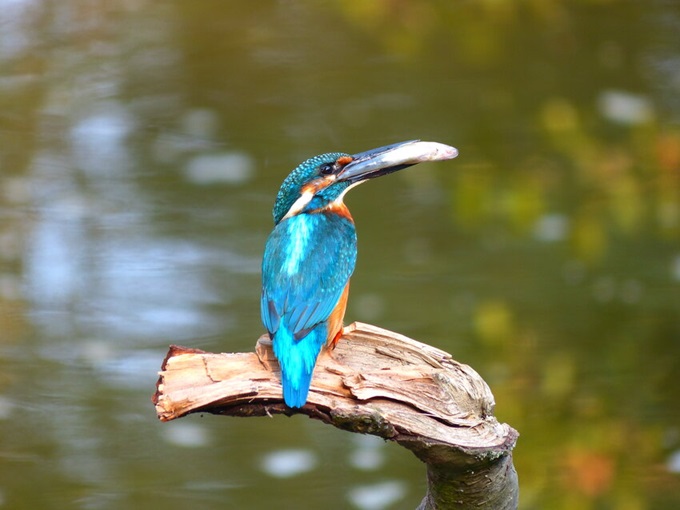
A brightly coloured Kingfisher Alcedo atthis taprobana.

The Kingfisher Alcedo atthis rufidorsa has distinctive reddish-brown plumage.
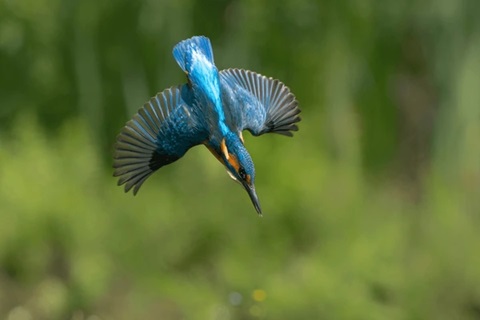
The moment the kingfisher was diving into the water.
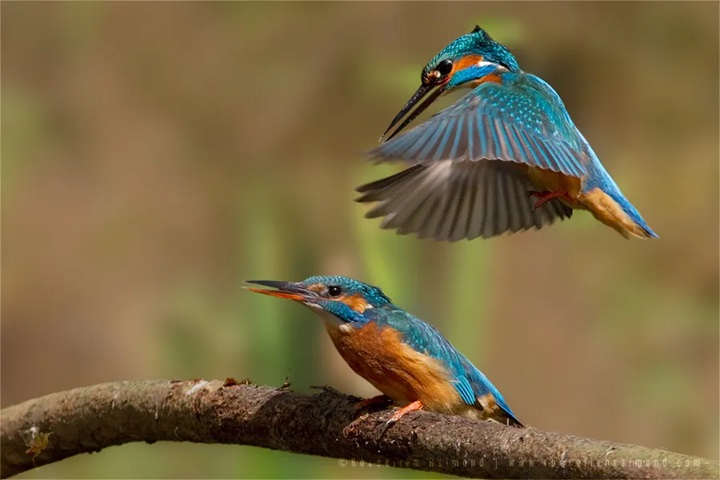
Two lovebirds are sitting next to each other.
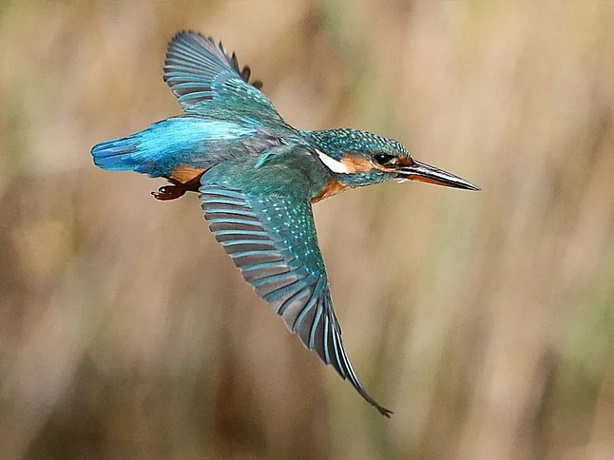
The image of a kingfisher spreading its wings and flying is extremely beautiful.
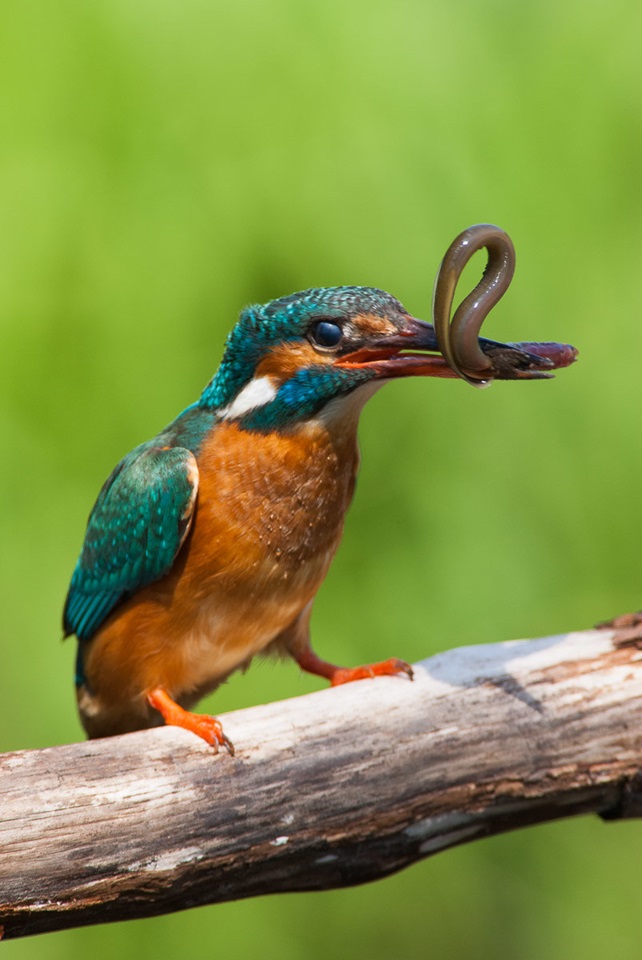
A kingfisher is eating an earthworm.

Alcedo atthis bengalensis with darker blue back feathers.
Through the above article, nicebirds.net has shared with you information related to the kingfisher (river kingfisher) - a small but attractive bird thanks to its brilliant appearance and interesting habits. Although this bird is not suitable for keeping as a pet, if you love them, let's join hands to protect their habitat to help the kingfisher shine in the wild.
If you want to learn, admire or collect more experiences in raising ornamental birds effectively, do not miss other articles in our Blog section. Goodbye and see you soon!

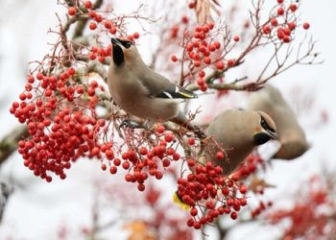

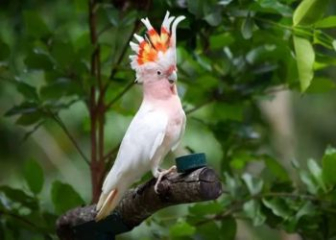
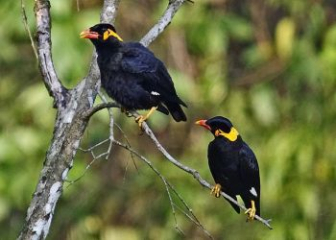
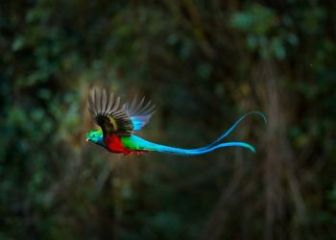





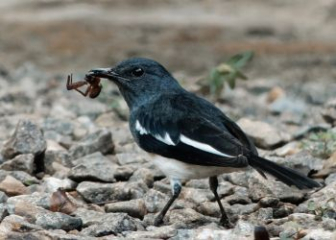
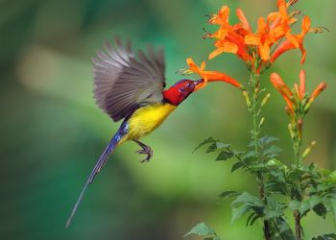


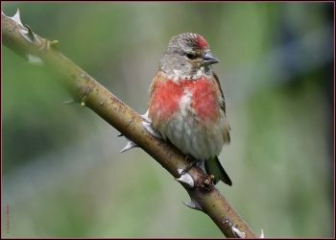
_350x250.jpg)
